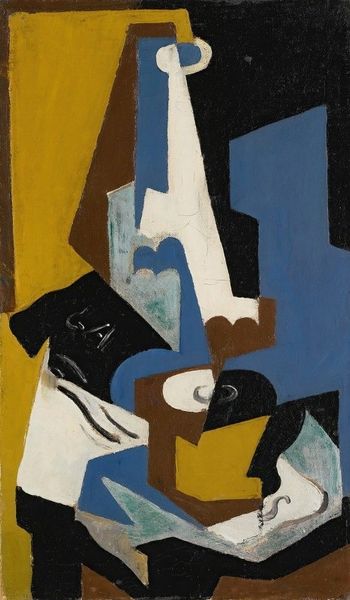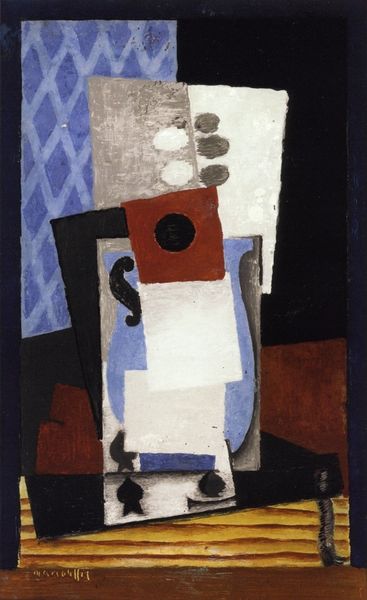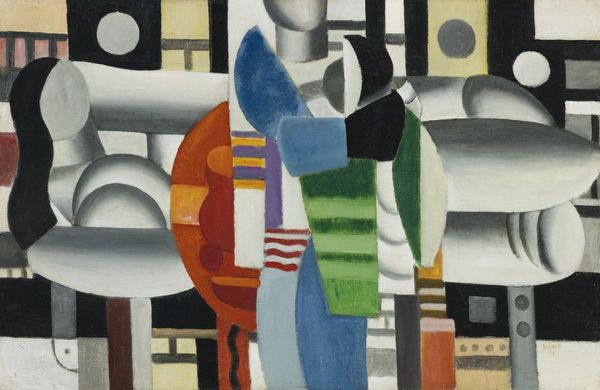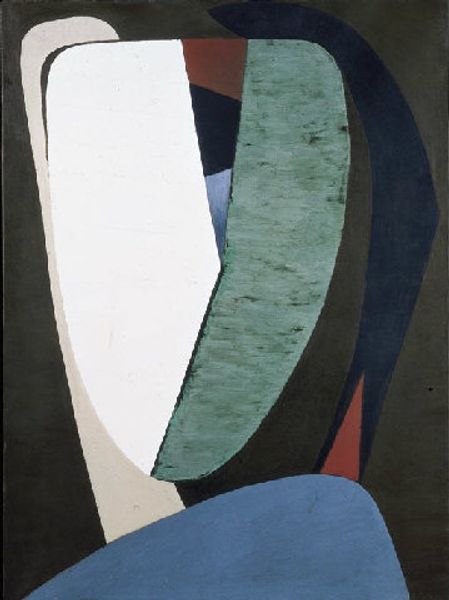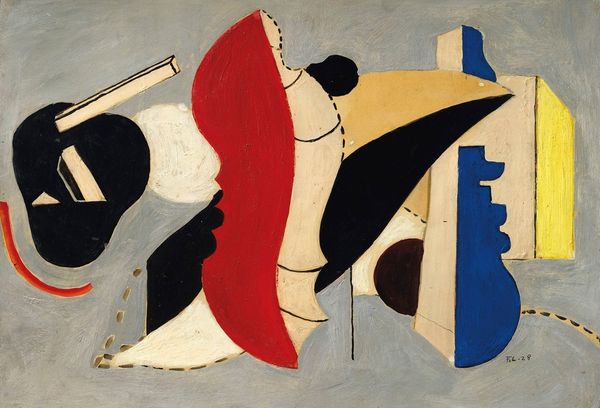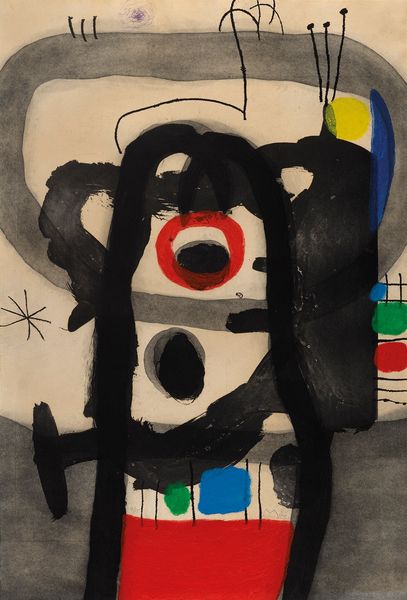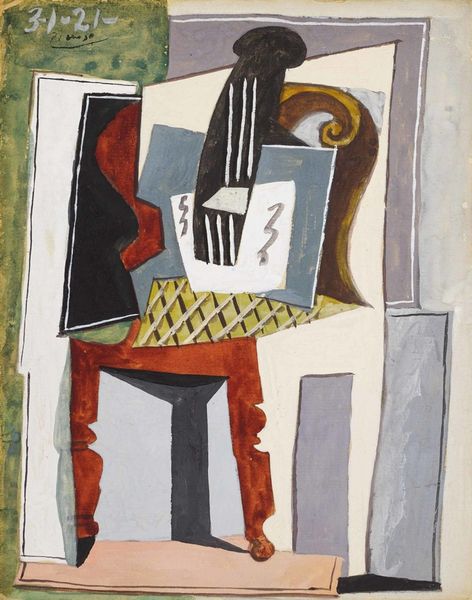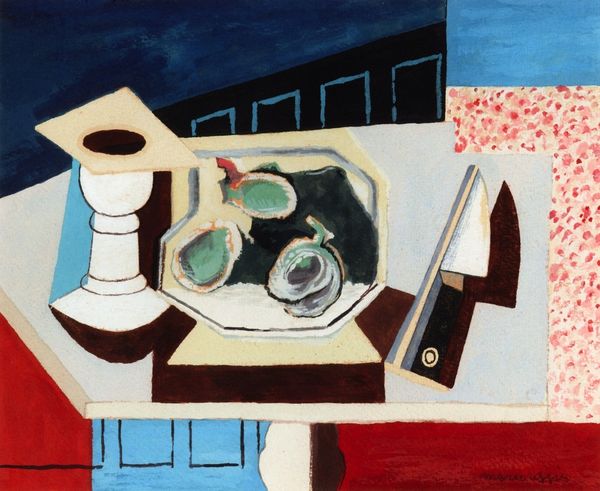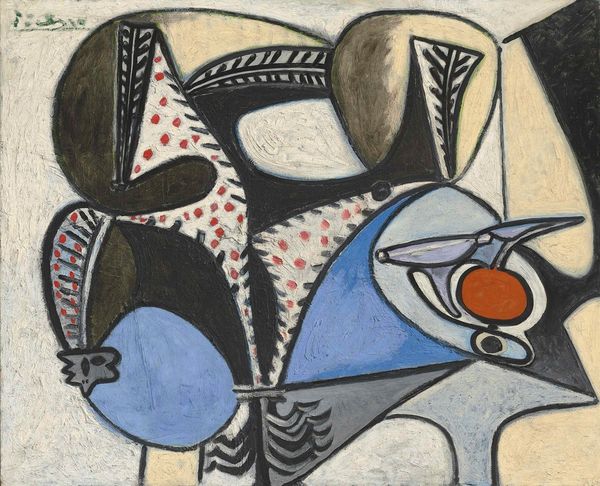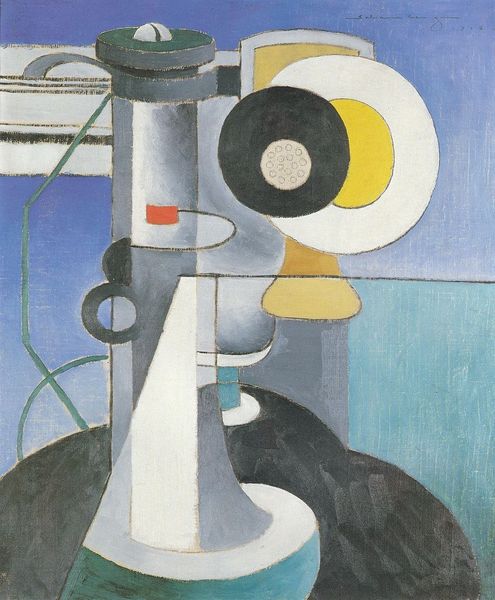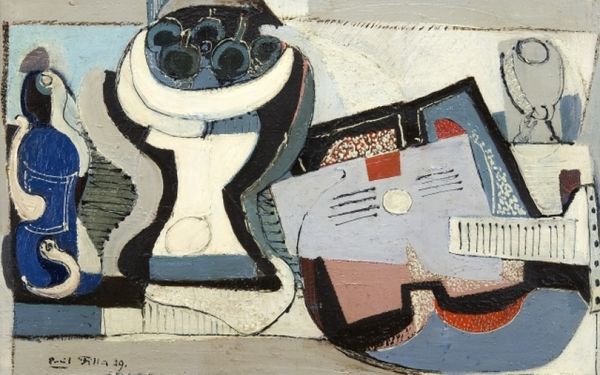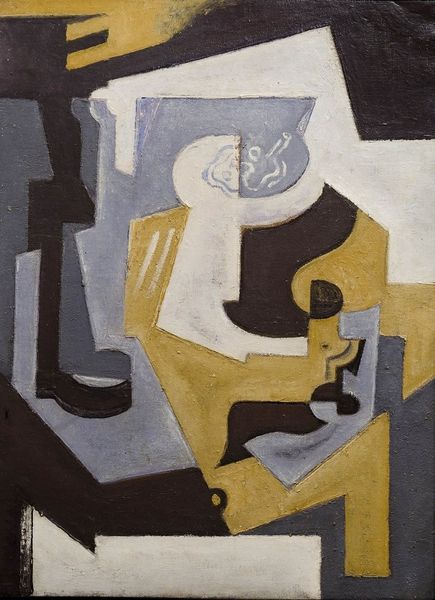
painting, oil-paint
#
cubism
#
painting
#
oil-paint
#
painted
#
oil painting
#
geometric
#
abstraction
#
modernism
Copyright: Public domain
Editor: This is Louis Marcoussis’s “Composition cubiste au portrait, poisson et clair de lune,” an oil painting from 1926. It's intriguing how the everyday objects are fragmented and reassembled. What can you tell me about how the socio-political context might have influenced this kind of art? Curator: That's a fantastic question. Remember that Cubism, while visually disruptive, emerged during a period of rapid industrial and social change. The fractured forms you see can be interpreted as a visual response to the instability and uncertainty of the early 20th century, influenced by events like World War I. Editor: So, artists like Marcoussis weren't just experimenting with form; they were also reacting to the world around them? Curator: Exactly! Consider the role of art institutions at the time. Museums and galleries were becoming increasingly important in shaping public taste and validating new artistic movements. Cubism, initially controversial, gradually gained acceptance, which impacted what the public valued as important. Editor: How did the Cubist style, in its depiction of reality, challenged existing visual culture? Curator: Good observation! Cubism radically departed from traditional academic art, which emphasized realism and idealized beauty. Cubism rejected the one-point perspective; consider its public role during moments of geopolitical upheaval, for instance. Editor: I see. So, it was more than just an aesthetic choice; it was a statement. Thinking about its reception, what do you believe audiences in the 1920's may have perceived when they first saw this painting? Curator: Initially, it was probably met with confusion and even outrage by many. However, there was also an intellectual avant-garde that saw it as a revolutionary break from the past. The key lies in recognizing the socio-political dimensions shaping those reactions. Editor: That really shifts how I see the piece. I thought it was just an arrangement, but there is an entire underlying discussion around the piece! Curator: Precisely. It reminds us that art is never created in a vacuum and how societal values can reshape meaning of the object.
Comments
No comments
Be the first to comment and join the conversation on the ultimate creative platform.

